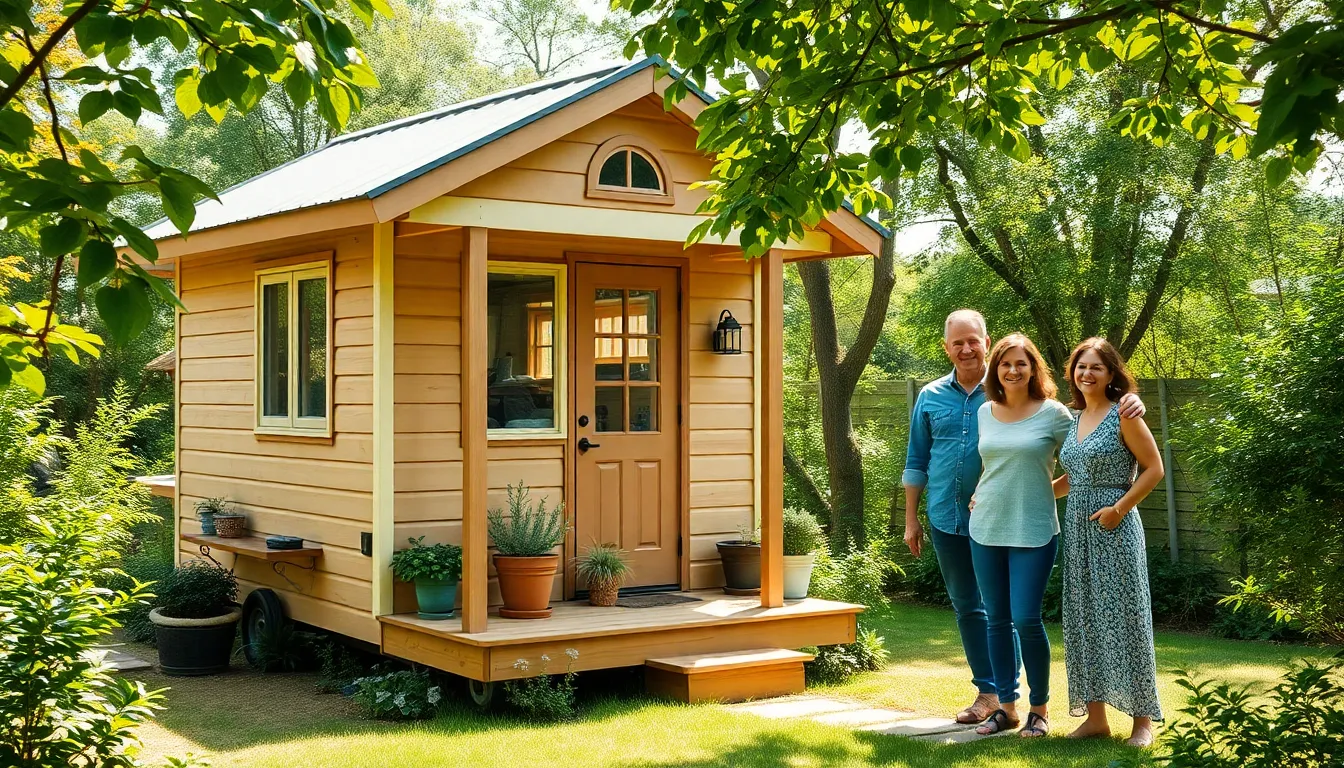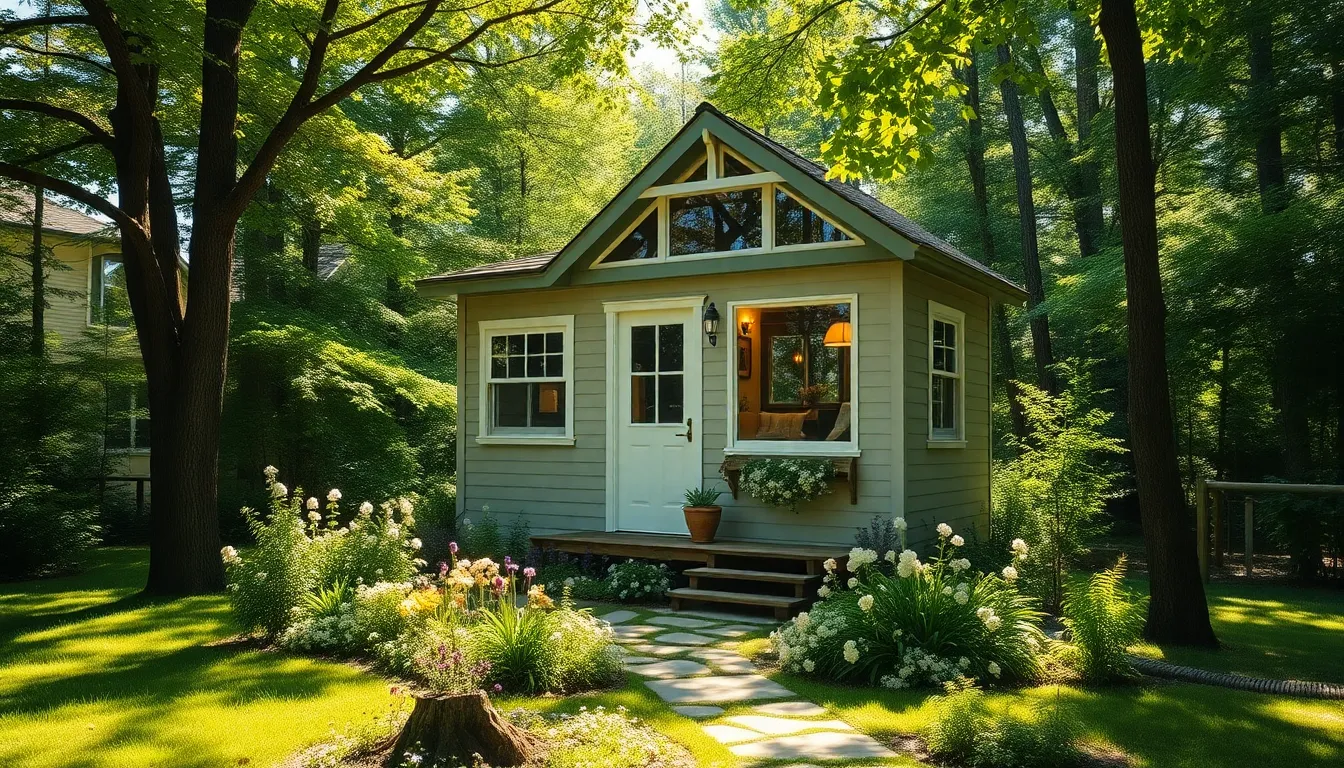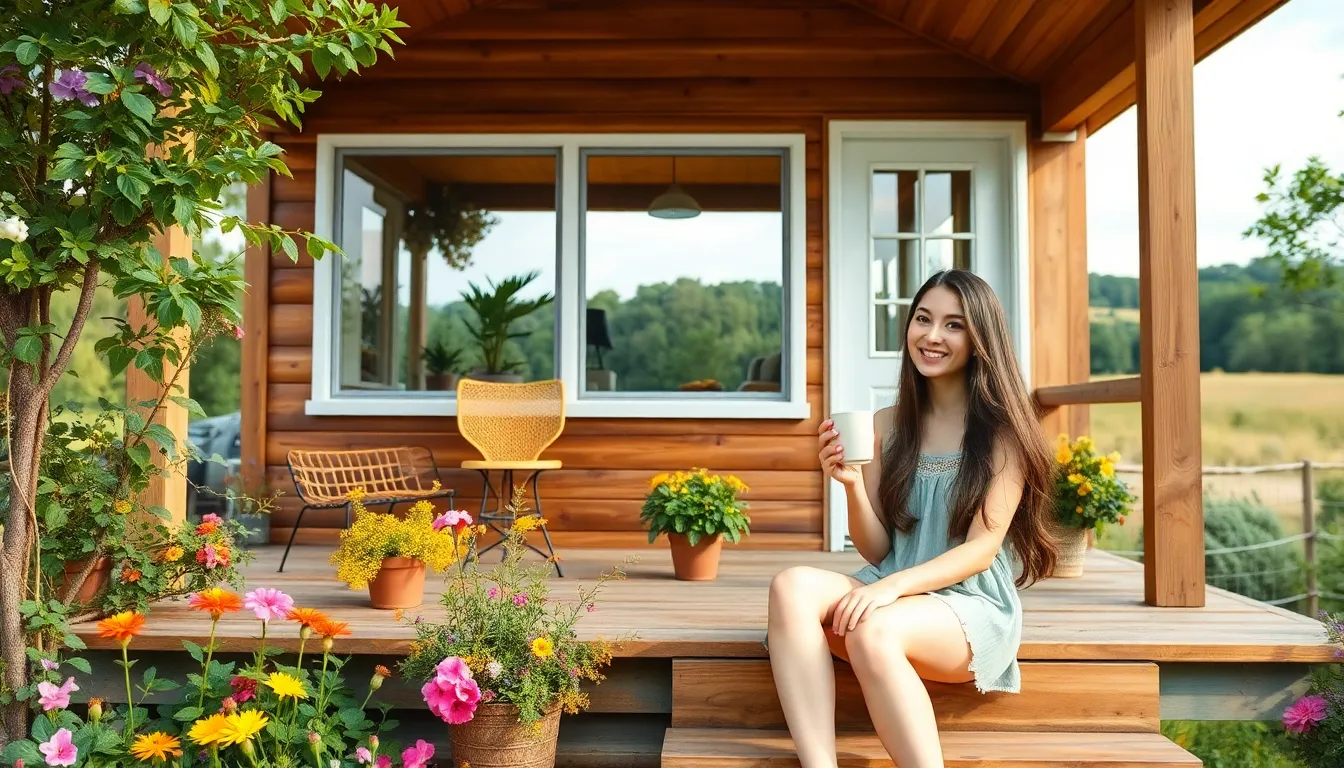Table of Contents
ToggleIn a world where bigger often seems better, the tiny house movement is flipping the script. Imagine living in a space that’s cozy enough to keep your socks from ever getting lost but still gives you the freedom to roam. Tiny houses aren’t just cute; they’re a clever solution for those looking to simplify their lives while saving money and reducing their environmental footprint.
These pint-sized palaces are not just for minimalists or hipsters on Instagram; they’re for anyone tired of the clutter and chaos of traditional living. With innovative designs and multifunctional furniture, tiny houses prove that good things really do come in small packages. So, if you’re ready to downsize your space but not your dreams, it’s time to explore the charm and practicality of tiny living. Who knew living small could feel so big?
What Is a Tiny House?
A tiny house is typically defined as a dwelling that measures less than 400 square feet. These homes emphasize efficiency and smart design to maximize space and functionality. Many tiny houses incorporate multifunctional furniture and innovative storage solutions. Various styles exist, from mobile tiny homes on trailers to stationary structures.
Sustainability underscores the tiny house movement, appealing to environmentally conscious individuals. Energy-efficient appliances and sustainable materials often characterize these homes. In addition, many owners embrace practices like minimalism to further reduce their ecological footprint.
Affordability is another major draw. A tiny house generally costs significantly less than a traditional home, making homeownership more accessible. For instance, the average price of a tiny house ranges from $30,000 to $60,000, compared to the median cost of a standard home, which often exceeds $300,000.
Community plays a vital role in the tiny house movement. Many enthusiasts gather in tiny house villages or cooperatives. Together, they foster a sense of belonging and support among like-minded individuals.
Flexibility remains a key advantage of tiny living. Homeowners can choose to relocate their tiny house or adapt it to their changing needs. Such versatility appeals to a wide range of lifestyles, from digital nomads to retirees seeking simpler living.
Benefits of Living in a Tiny House

Living in a tiny house offers numerous advantages that align with modern lifestyles.
Affordability
Affordability stands out as a primary benefit of tiny houses. Average costs range from $30,000 to $60,000, making homeownership achievable for many. Lower utility bills also contribute to ongoing savings, while reduced mortgage amounts decrease financial strain. Couples and individuals frequently find that tiny living enables them to allocate funds toward experiences rather than housing. Many tiny homeowners avoid common expenses associated with traditional homes, such as property taxes, maintenance costs, and landscaping. This financial flexibility allows for a more liberated lifestyle.
Environmental Impact
Environmental impact remains a significant advantage of adopting a tiny house lifestyle. Tiny houses typically require fewer resources for construction, using sustainable materials and energy-efficient appliances. Smaller living spaces demand less energy for heating and cooling, promoting eco-friendly habits. Homeowners often report reduced carbon footprints, with the average energy consumption significantly lower than that of standard homes. Water conservation becomes easier too, as smaller homes require fewer resources overall. These factors make tiny living an attractive option for those committed to sustainability.
Minimalist Lifestyle
Minimalist lifestyle principles thrive in tiny houses. Such homes encourage decluttering and prioritizing essential items, fostering a focus on experiences rather than possessions. Many residents enjoy the simplicity that comes from living with fewer possessions, leading to increased mindfulness and satisfaction. Spaces design often maximizes functionality, utilizing multifunctional furniture to meet diverse needs. The tidy environment promotes peace and reduces stress, aligning perfectly with the minimalist philosophy. People frequently discover that a simplified lifestyle results in enhanced well-being and happiness.
Design and Architecture of Tiny Houses
Tiny houses utilize innovative design to optimize limited space. Smart architecture prioritizes efficiency while ensuring comfort. Each element contributes to a functional and inviting environment.
Layout Considerations
Open floor plans dominate tiny house layouts. These designs create the illusion of more space and foster a sense of connection between areas. Multi-functional rooms serve various purposes, enhancing flexibility. For instance, living areas often double as workspaces or guest accommodations. Additionally, vertical space is crucial, with lofted beds maximizing usable square footage. Natural light plays a significant role; large windows and skylights increase brightness, making interiors feel more spacious.
Common Features
Tiny houses often share distinctive characteristics. Efficient kitchens may include compact appliances and innovative storage solutions. Bathrooms frequently feature space-saving fixtures like wall-mounted sinks and shower stalls instead of bathtubs. Many tiny homes incorporate built-in furniture, such as foldable tables and sofa beds. Sustainable materials, such as reclaimed wood and eco-friendly insulation, are commonly used. Moreover, energy-efficient systems and solar panels enhance sustainability, appealing to environmentally conscious homeowners. Each of these elements reinforces the charm of tiny living while promoting practical solutions.
Challenges of Tiny House Living
Tiny house living presents various challenges that potential homeowners must consider. Addressing these hurdles ensures a smoother transition into this lifestyle choice.
Space Limitations
Space limitations significantly impact daily life in a tiny home. Available square footage often restricts storage options, making organization crucial. Individuals may find it challenging to declutter and prioritize belongings, as multifunctional furniture becomes essential. In many cases, creativity fills the gaps, with innovative storage solutions becoming a focus. Adaptability also plays a key role, as residents must frequently rearrange their space to accommodate changing needs. Regardless of the layout, living in under 400 square feet requires skills in maximizing functionality while maintaining comfort.
Zoning and Regulations
Zoning and regulations vary widely, complicating tiny house living. Local governments enforce differing building codes, leading to potential difficulties in securing permits and establishing residences. Many communities impose minimum square footage requirements that exclude tiny houses. Some areas restrict tiny homes on wheels, further limiting homeowners’ options for mobile living. Understanding local laws, ordinances, and homeowners association rules is vital before pursuing a tiny home. Navigating these regulations ensures compliance, fostering a legal and stable living situation.
Popular Tiny House Communities
Tiny house communities offer unique opportunities for individuals seeking a simpler lifestyle. Cohousing involves shared resources and communal spaces, fostering connections among residents. Some of the most notable tiny house communities include:
- Tiny House Village, Washington: Located in Seattle, this village features over 15 tiny homes, showcasing environmentally friendly living. It supports initiatives for sustainable practices while providing a welcoming environment for residents.
- Escape Tampa Bay, Florida: Escape Tampa Bay offers a variety of tiny homes on wheels. Residents enjoy a vibrant community atmosphere, complete with amenities like a pool and clubhouse. This community emphasizes mobility and the freedom to explore new locations.
- Tiny House Community, Texas: Situated in the heart of Texas, this community has over 20 tiny houses. It attracts individuals looking to downsize and simplify their lives. The focus on community activities encourages engagement among residents.
- Quixote Village, Washington: Quixote Village serves as a supportive community for the homeless. It consists of tiny houses that provide stability to individuals transitioning from homelessness. The village model illustrates the potential of tiny homes to address social issues.
- Le Domaine des Forges, France: This European community showcases the growing global interest in tiny living. Located in France, it combines tiny homes with natural beauty, providing a serene environment for residents seeking tranquility.
Varied lifestyles thrive in these communities, creating spaces where like-minded individuals come together. These environments enhance the appeal of tiny living by fostering connections and encouraging sustainable practices. Each community demonstrates how tiny house living promotes financial freedom, environmental responsibility, and a supportive network for those embracing a minimalist lifestyle.
Tiny house living presents a compelling alternative for those seeking simplicity and sustainability. It encourages individuals to rethink their relationship with space and material possessions while fostering a sense of community. The innovative designs and multifunctional features of tiny homes enhance both comfort and functionality, proving that less can indeed be more.
As the movement continues to grow, it offers a pathway to financial freedom and a reduced environmental footprint. Embracing tiny living not only leads to a more mindful lifestyle but also opens doors to new experiences and connections. For anyone considering a shift towards minimalism, tiny houses provide an inviting and practical solution.



